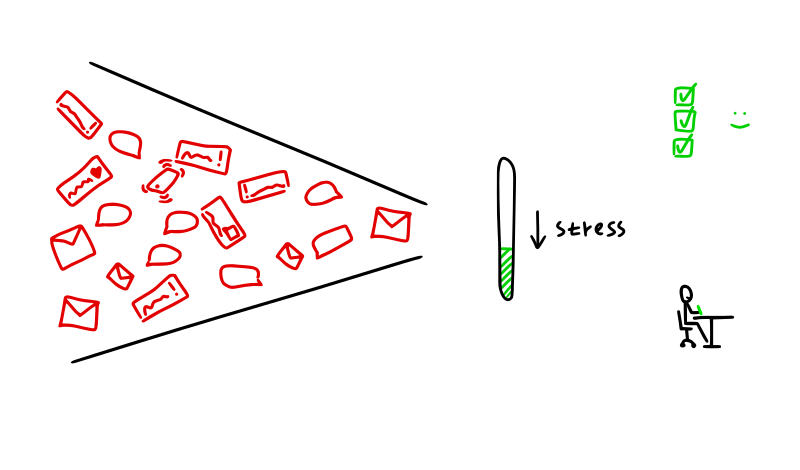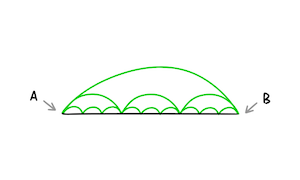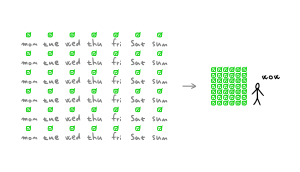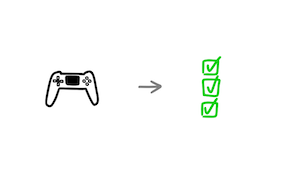Create a positive feedback loop to become motivated
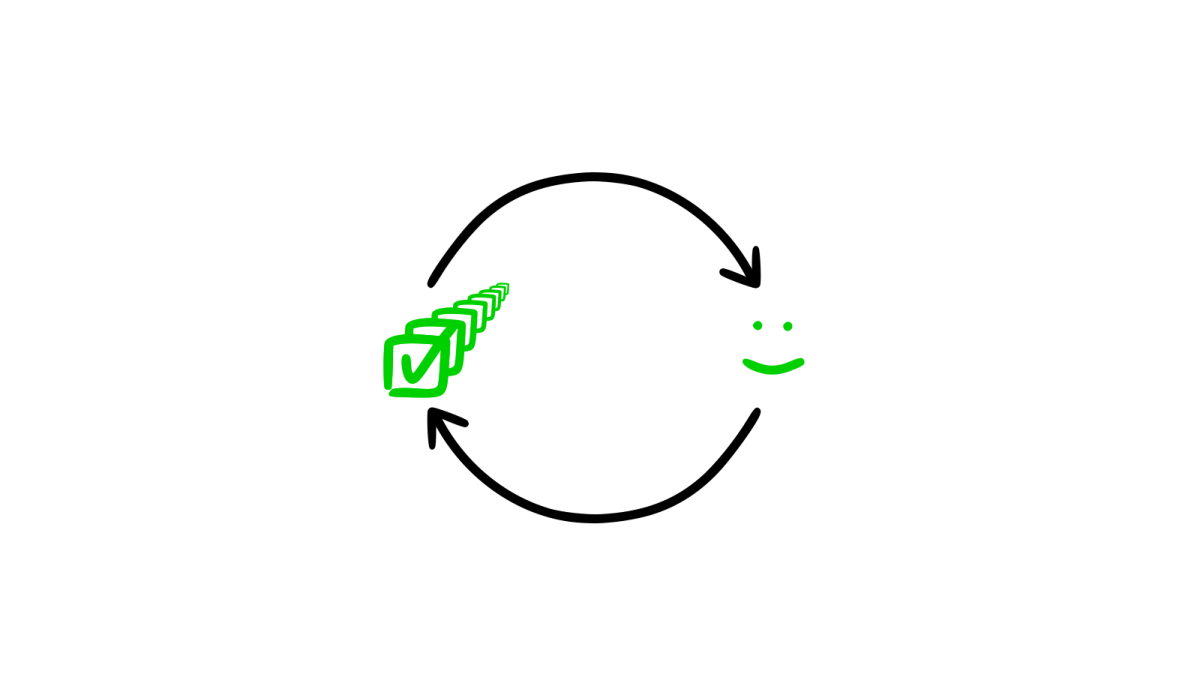
Do you struggle with enjoying your work?
Do you struggle with going to the gym regularly?
How come other people are really passionate about their work? How come other people like to go to the gym every day? It’s because they’ve established positive feedback loops.
Imagine how you feel after successfully completing an assignment ahead of time… You feel good, don’t you? You feel a sense of accomplishment. You took action, finished the task, and then felt good about it. That’s what a positive feedback loop is. Your brain likes it. That’s how most human behavior works. We like to do things that make us feel good.
Negative behaviors with positive feedback loops
You can argue that a positive feedback loop is also feeling good while giving in and finally eating the cake. And yes, that’s correct but it’s the wrong kind of a positive feedback loop. It feels good only while it’s happening.
That’s why procrastination becomes a habit. Imagine that you have a task to do. This task makes you feel stressed. You procrastinate the task by having a snack and it immediately lowers your stress, which makes you feel better (positive feedback loop). Your brain learns that when you’re stressed, you can simply procrastinate (have a snack) and the stress will go away. Your procrastination behavior is reinforced by feeling good and it becomes a habit soon.
While this relief is immediate, it’s also short-lived. In the long term, procrastination makes you feel terrible. You feel guilty, your sense of responsibility deteriorates, you break promises you gave, you can’t enjoy leisure because you haven’t finished what you were supposed to. Or you become even more stressed because you’re in a rush before a deadline and you can’t make it in time.
The thing is, most of these bad behaviors feel good only while they’re happening, immediately. After you’re done with them, they feel terrible.
But our brains are very bad at distinguishing what led us to feeling down.
The brain knows that procrastinating when feeling stressed leads to lowered stress and that feels great. The brain’s ability to connect procrastination to feeling bad later is weak. Sometimes, when you’re more mindful, you realize that you feel terrible while doing it. That’s when you can’t even procrastinate happily because you know deep inside you’re avoiding something.
Examples of these short-term behaviors:
- Procrastination
- Binge-eating
- Playing games until 6AM
- Drinking too much alcohol
You might feel good while doing these, but in the end you feel worse.
Positive behaviors with positive feedback loops
If you’re trying to form productive habits or maximize happiness in your life, you have to start looking for a special kind of positive feedback loops. You have to start thinking about how you feel after finishing the behavior.
Examples of behavior that feel good later:
- Tidying
- Filing taxes
- Working
- Eating healthy
- Studying
These things usually don’t feel good while we’re doing them. There aren’t that many people who enjoy the process of filing taxes. Yet, most of us love the feeling of having finished it, especially the relief that it’s over.
Let’s say you have some work to do. You decide to not give in and start working. It doesn’t feel pleasant at all. However, after you finish working, you think how good it feels that you have done some work. This reinforces your working habits and it’s easier to work next time.
The good news is that there are also behaviors that are good for us and also feel good while happening.
Examples of behaviors that feel can good now and also later:
- Working in the flow state
- Working on something exciting
- Eating delicious but healthy food
- Being curious and researching things
- Exercising
With these behaviors, it’s quite easy to get addicted to them.
If you watch regular gym-goers, they don’t struggle with showing up, they don’t consider it hard. They like exercising (now), they like the feeling of tiredness after their session and they also like how they look. It’s really easy for them to continue.
If you watch people who are curious, they don’t struggle to study… They breeze through the things they’re supposed to learn and go beyond.
If you watch people who are passionate about their work, they look forward to working.
Without establishing positive feedback loops, trying to be productive, going to the gym, or any other endeavor will be like fighting an uphill battle.
That’s why if you don’t find anything enjoyable about your work, you should try making it more exciting or as a last resort maybe change your job or even a field.
That’s why if you don’t enjoy going to the gym, you should find out why or look for a different physical activity that will be fun for you.
Of course, you have to give yourself time to establish the habits and start liking the positive feedback loops. Someone can fall in love with exercising immediately, someone else starts liking it only once he gets better. The latter is more common.
The cycle is self-reinforcing:
When you like something, you do it more often, you see more progress and the progress fuels your motivation, and you like it even more.
But you can’t expect this happening immediately especially if you’re depressed or a chronic procrastinator.
Also, if you get distracted for 4 hours every day, you might consider lowering your dopamine threshold by getting bored more often. This will give you the time you need to establish these positive feedback loops. If the brain is overwhelmed with dopamine all the time, it doesn’t have time to think and contemplate how you feel after certain behaviors.
Both of us think that most of the time, life should be fun to be sustainable in the long term. Some annoying things are unavoidable but we shouldn’t have to force ourselves to do things.
How to create a positive feedback loop for what matters
So how does one create a positive feedback loop?
You can do it in a couple of ways.
1. Start with the enjoyable parts
With any project, assignment, or goal, there are going to be parts that you enjoy and parts that you don't.
If you're starting, enthusiasm is more important than mastery. In The Talent Code, Daniel Coyle stresses that the first coach of any future start performer did not focus on the technical details of a craft. No, the first coach or trainer had one important goal: encouragement.
Only once the pupil fell in love with the craft and found their second coach, the focus shifted on technicalities.
At the start of anything, focus on the most exciting, interesting, or enjoyable parts. That will create a positive feedback loop that will carry you through the more technical details later.
2. Focus on the good
Two people do a workout. The first person curses under their breath the whole time and repeats to themselves "I hate this." The second person listens to good music and focuses on doing their best, no matter the exercise and repeats to themselves "Let's do this."
This is a characterization, but if you were to bet on who'll show up to workout more often, who would you bet on?
Don't poison your attitude.
"I hate this."
"I don't want to do this."
"What am I doing?"
Mantras like the above will only make you feel more negative and make any change harder.
Simple "let's do this" will serve you much better. We know that undoing a lifetime of negative self-talk may be hard, but try to be at least neutral if you can't bring yourself to be positive.
Focus on the progress that you're making, on the fact that you're doing something, on how you're getting better.
Focus on the good, not the bad.
3. Create a visual scoreboard
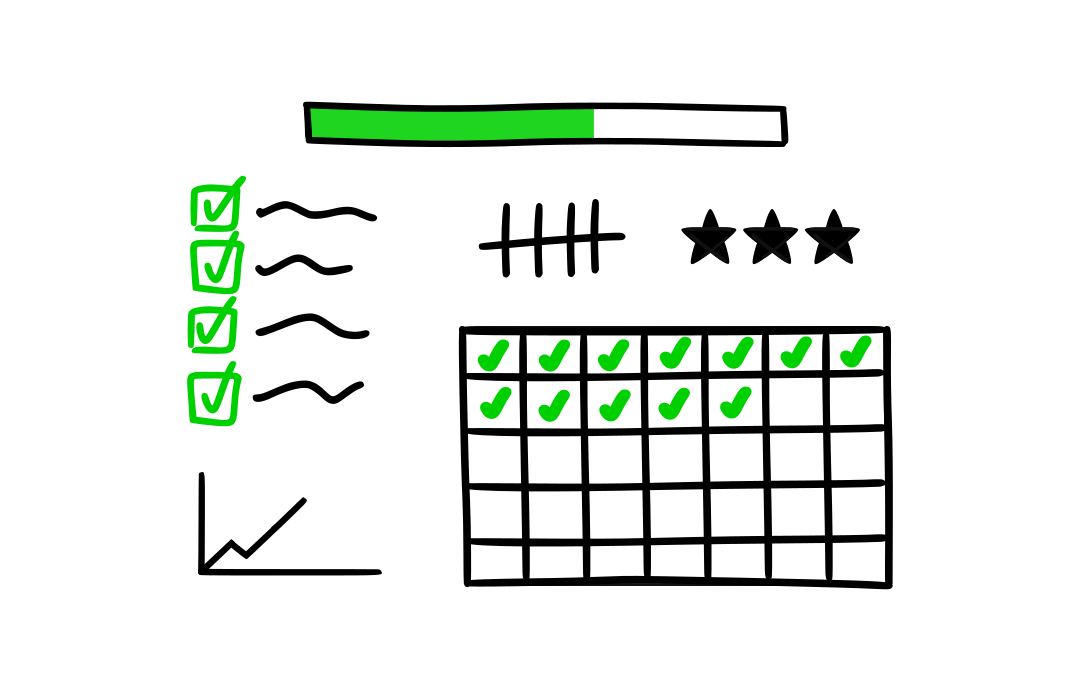
We've written about creating a visual scoreboard here more extensively. The gist of it is that the results of mental work are often invisible or intangible.
If you create some kind of a visual scoreboard, you will start seeing your results instead of just thinking about them.
The scoreboard can be a calendar with check marks for each day you've written a page of a thesis, or a piece of paper where you write the number of tasks done each day, or a digital graph where you track minutes spent coding.
Any way of visually tracking your effort will help you establish a positive feedback loop.
4. Try a different strategy with the same goal
Lastly if all else fails, you can change your approach and choose a different feedback loop altogether.
If you have a goal of getting fit, you can start running, start lifting weights, start doing calisthenics, start walking more, or start changing your eating habits. Whichever makes you feel good will help you get on the right track.
Once you see yourself as someone who runs, then it will become easier for you to get into other types of exercise.
If you give a strategy a try and find out you hate it, change your strategy.
Summary
What do you want to do more of? Do you want to be more productive in general? Write more? Exercise consistently?
What’s your positive feedback loop?
If you want to kickstart one:
- Start with the enjoyable parts
- Focus on the good
- Create a visual scoreboard
- Try a different strategy
Positive feedback loops based on feeling good about taking action.
If you can feel good about long-term endeavors that are good for you, you win at life.
